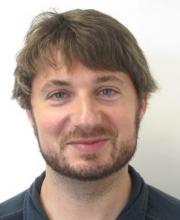Difference between revisions of "User:ZacharyAdam"
(CSV import) |
ZacharyAdam (talk | contribs) |
||
| Line 2: | Line 2: | ||
|Image=Zachary Adam.jpg | |Image=Zachary Adam.jpg | ||
|Name=Zachary Adam | |Name=Zachary Adam | ||
| − | |Affiliation= | + | |Affiliation=University of Arizona |
| − | |Email address=zadam@ | + | |Email address=zadam@arizona.edu |
| − | |Biography=Zach studies two of the major transitions in the history of life as | + | |Biography=Zach studies two of the major transitions in the history of life as a scientist in the Lunar and Planetary Laboratory at UA: the origins of replicating molecules and the origins of the eukaryotic cell. |
| − | Zach | + | |
| + | |||
| + | |||
| + | <span>Zach studies geologic settings that could have promoted the synthesis of complex organic compounds on the early Earth, with a focus on conditions capable of driving prebiotic oligomer synthesis reactions. Zach and his collaborators at ELSI have uncovered a 'switching network' of compound synthesis driven by the radiolysis of water that selectively produces the key precursors required for abiotic ribonucleotide synthesis:</span> | ||
| + | |||
| + | |||
| + | <span></span> | ||
| + | |||
| + | |||
| + | <span>1) Nucleobase precursor and polymer-promoting solvent formamide (Adam et al., 2018)</span> | ||
| + | |||
| + | |||
| + | <span>2) Sugar precursors glycolaldehyde, glyceraldehyde and 2-aminooxazole (Yi et al., 2018)</span> | ||
| + | |||
| + | |||
| + | <span>3) Polyphosphate precursor monoammonium phosphate (Adam and Lago, in prep.)</span> | ||
| + | |||
| + | |||
| + | <span>4) Nucleotide assembly compounds, condensing agents and leaving agents such as cyanamide and cyanogen (Yi et al., 2018; Fahrenbach et al., in prep.; Adam et al., in prep.)</span> | ||
| + | |||
| + | |||
| + | |||
| + | |||
| + | Zach also discovered two new sources of microfossils in the 1.4 billion year old Belt Supergroup of Montana. The assemblages include unique specimens of Tappania plana, one of the earliest examples of complex eukaryotes and the first such fossils reported from Laurentia. The quality of preservation, diversity of the assemblages and the accessibility of the units opens new avenues into exploring the morphology and ecology of some of Earth s oldest eukaryotes. Zach continues to study these and other fossils, looking for taxon-specific carbon isotope values and ultrastructural clues as to the affinity or metabolism of these organisms. | ||
|Related links={{Related link | |Related links={{Related link | ||
| + | |Related link title=Personal site | ||
| + | |Related link URL=http://www.zradam.org | ||
| + | }}{{Related link | ||
|Related link title=Harvard Profile | |Related link title=Harvard Profile | ||
|Related link URL=https://eps.harvard.edu/people/zachary-adam | |Related link URL=https://eps.harvard.edu/people/zachary-adam | ||
}} | }} | ||
}} | }} | ||
Revision as of 21:36, November 2, 2018
- Name
- Zachary Adam
- Affiliation
- University of Arizona
- Email address
- zadam@arizona.edu
Biography
Zach studies two of the major transitions in the history of life as a scientist in the Lunar and Planetary Laboratory at UA: the origins of replicating molecules and the origins of the eukaryotic cell.
Zach studies geologic settings that could have promoted the synthesis of complex organic compounds on the early Earth, with a focus on conditions capable of driving prebiotic oligomer synthesis reactions. Zach and his collaborators at ELSI have uncovered a 'switching network' of compound synthesis driven by the radiolysis of water that selectively produces the key precursors required for abiotic ribonucleotide synthesis:
1) Nucleobase precursor and polymer-promoting solvent formamide (Adam et al., 2018)
2) Sugar precursors glycolaldehyde, glyceraldehyde and 2-aminooxazole (Yi et al., 2018)
3) Polyphosphate precursor monoammonium phosphate (Adam and Lago, in prep.)
4) Nucleotide assembly compounds, condensing agents and leaving agents such as cyanamide and cyanogen (Yi et al., 2018; Fahrenbach et al., in prep.; Adam et al., in prep.)
Zach also discovered two new sources of microfossils in the 1.4 billion year old Belt Supergroup of Montana. The assemblages include unique specimens of Tappania plana, one of the earliest examples of complex eukaryotes and the first such fossils reported from Laurentia. The quality of preservation, diversity of the assemblages and the accessibility of the units opens new avenues into exploring the morphology and ecology of some of Earth s oldest eukaryotes. Zach continues to study these and other fossils, looking for taxon-specific carbon isotope values and ultrastructural clues as to the affinity or metabolism of these organisms.
Related links
Involvement in the Origins Research Theme
Attendee
This user is listed as an attendee for the following meetings:
